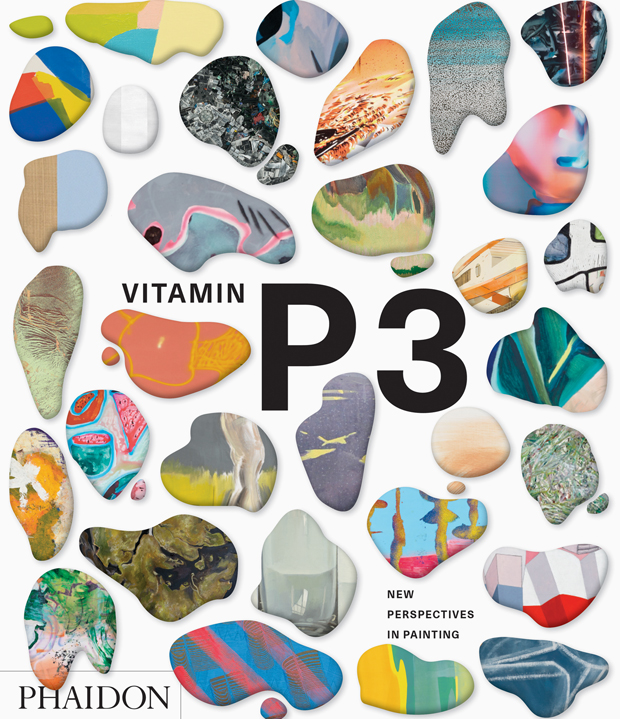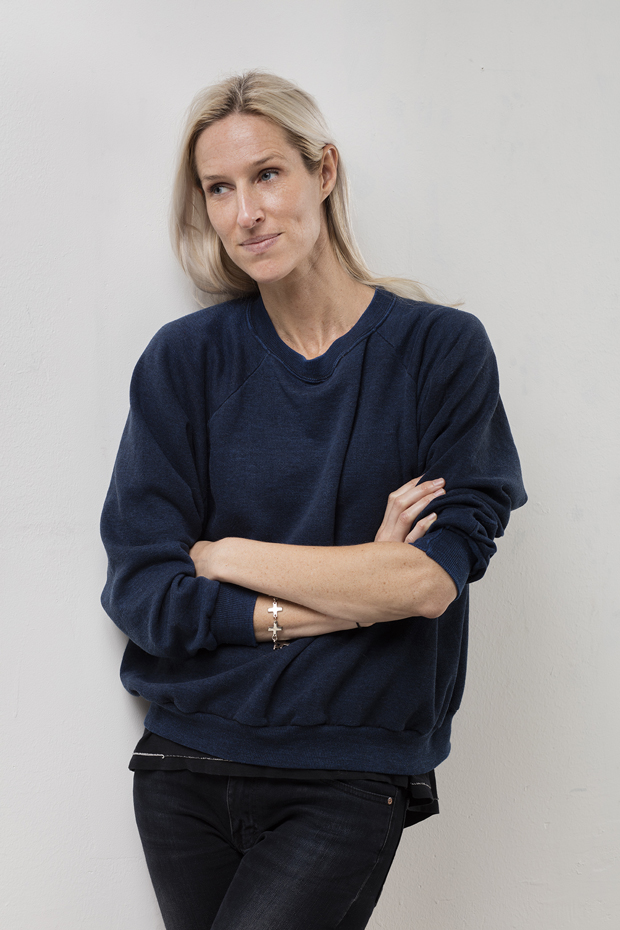
Alex Olson - Why I Paint
Exploring the creative processes of tomorrow's artists today - as featured in Vitamin P3
There is a particular technique of applying paint that distinguishes Alex Olson’s work. It appears in a great many of her paintings, including a number of works in her ‘Proposal’ series (2012): a squeegeed strip of colour, immaculately smooth except at its tail end where a curling crest of paint betrays where the artist lifted her tool from the canvas. The mark seems to tell us everything we could want to know about the texture of oil paint: its viscosity, its speed, its consistency – all this information is readily available on the surface. And yet there is something about Olson’s paintings that is a little too perfect to be taken at face value. Certain things about them do not quite add up. Frequently listed in her media, along with oil paint and linen, is modelling paste – indicating that the paintings are more fastidiously fabricated than their gestural surfaces might sometimes imply.
Furthermore, the ground on which they sit, which consists of an even field of brushstrokes curving in all directions (another Olson trademark, perhaps lifted from domestic wall textures of the 1970s) is uncannily tidy. Each individual hair in each brushstroke seems to have been accentuated through black dry-brushing, or under-painting, or sanding-through, in contrast to the smooth and wet-looking strips on top. This is painting to the power of itself. Here, the Vitamin P3-featured painter tells us what interests, inspires and spurs her on.
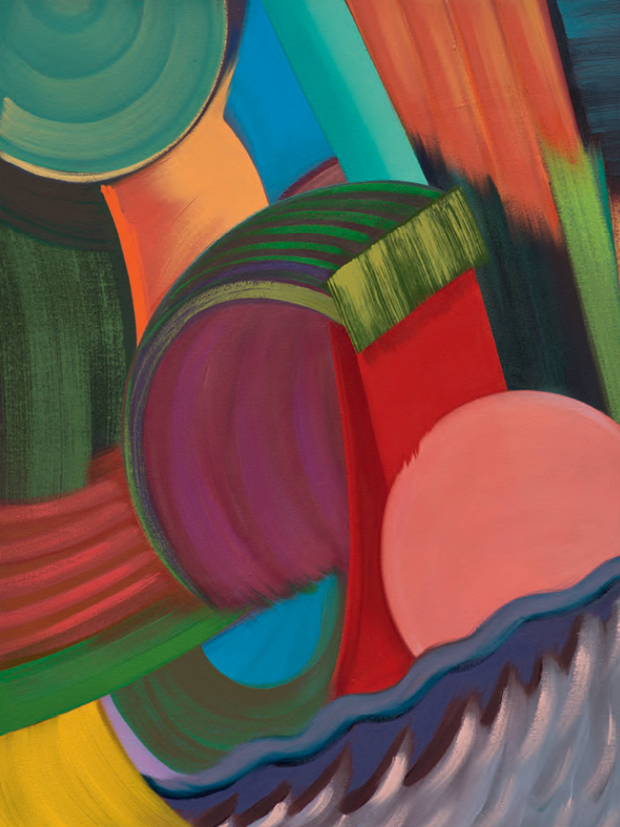
Who are you? I’m an artist from Boston, living and working in Los Angeles.
What’s on your mind right now? The precarious global state of affairs. Otherwise, I’m listening to a podcast on the invisible forces that impact our everyday lives, which touches on my interests in sociology and perception. I’ve been newly drawn towards Surrealism and Op Art, both of which I’ve always had a strong aversion to, but now am finding some resonance with the ideas behind them as opposed to the forms they took. I’m also trying to figure out what a ‘visual speed bump’ might look like.
How do you get this stuff out? I primarily think by making, so I need to try out ideas and impulses and then read the results in order to see how to proceed.
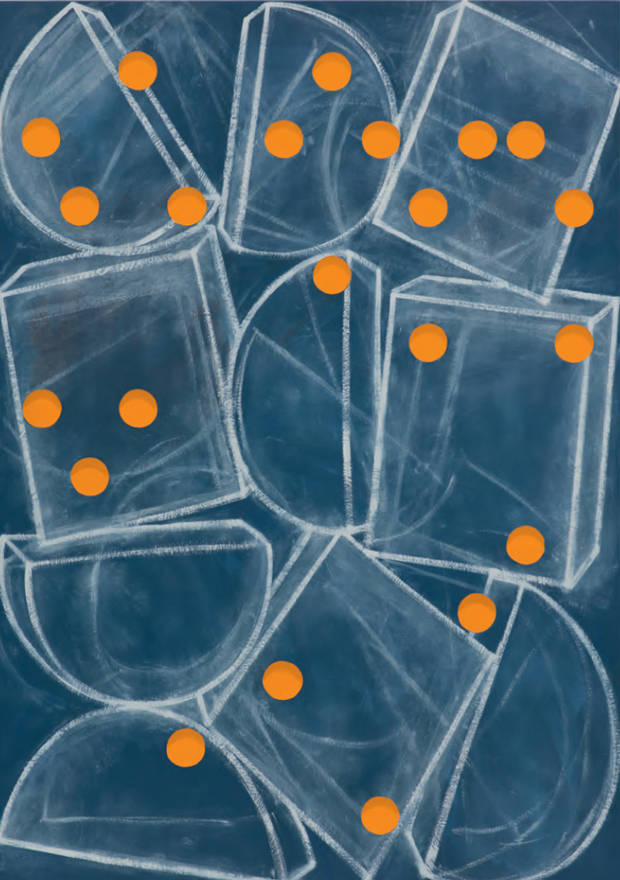
How does it fit together? Each body of work leads to the next, so while I make a wide range of work in terms of how the paintings look, if you could take a macroscopic view, there’s a lineage to the whole. Within each body of work, and even within each painting, there are dialectical relationships. Two iterations of an idea are often presented along side one another for the viewer’s reflection. I tend to think of the paintings as social, meaning the experience for the viewer is one of an exchange with the painting.
What brought you to this point? I made the worst painting I’ve ever seen between my first and second years of grad school—one that I thought would please the professors rather than for reasons I cared about—and seeing it made it clear I needed to make work I believed in, first and foremost. What I consider “my work” started right after that, and it’s been a slow and steady crawl ever since.
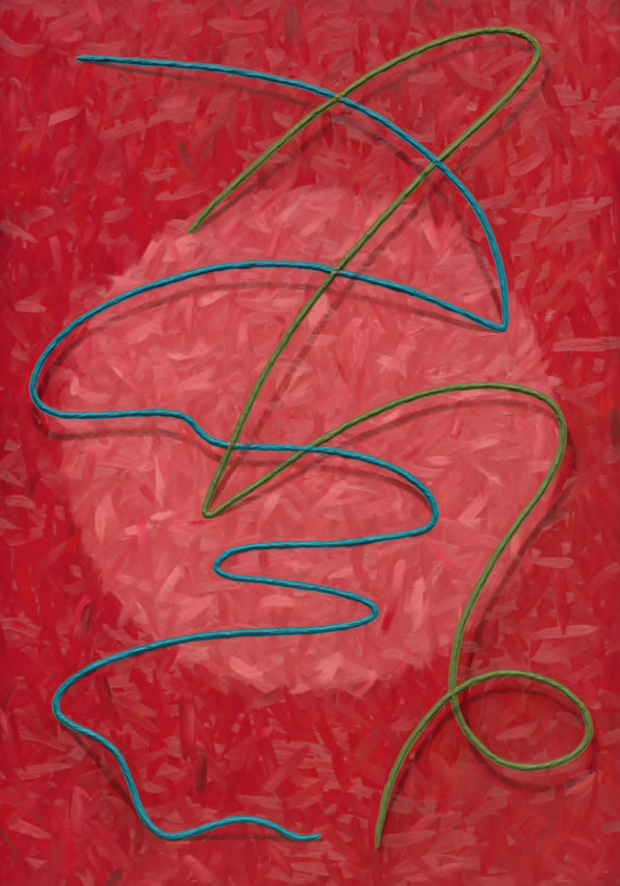
Can you control it? Yes, but it’s best not to.
Have you ever destroyed one of your paintings? Oh, all the time! I make a lot of paintings that fail. I need to have space to fail in order to learn and react and take chances.
What’s next for you, and what’s next for painting? I never know what’s coming next. I go wherever my brain seems most excited to go. The work builds on past work, combining with my current interests and experiences, to grow into the next body of work. I think of painting as a lot like writing in that it’s a language and while many of its elements are already known—marks are like letters and words—how they are combined has endless possibilities. Depending on the context of the times, these elements gain new or shifting meanings, and each generation has the opportunity to recast them in response to the moment she lives in from her point of view.
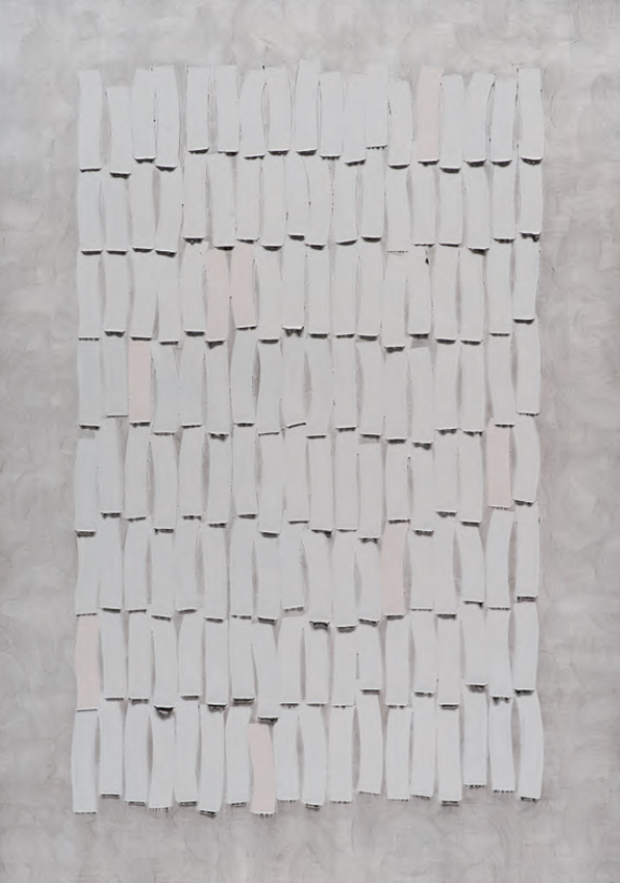
Vitamin P3 New Perspectives In Painting is the third in an ongoing series that began with Vitamin P in 2002 and Vitamin P2 in 2011. For each book, distinguished critics, curators, museum directors and other contemporary art experts are invited to nominate artists who have made significant and innovative contributions to painting. The series in general, and Vitamin P3 in particular, is probably the best way to become an instant expert on tomorrrow's painting stars today.
Find out more about Vitamin P3 New Perspectives In Painting here. Check back for another Why I Paint interview with a Vitamin P3-featured artist soon. And for more great new artists be sure to regularly check out Artspace.com.
